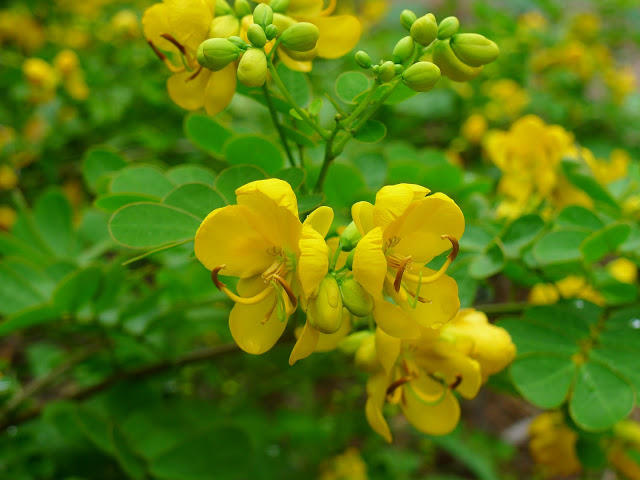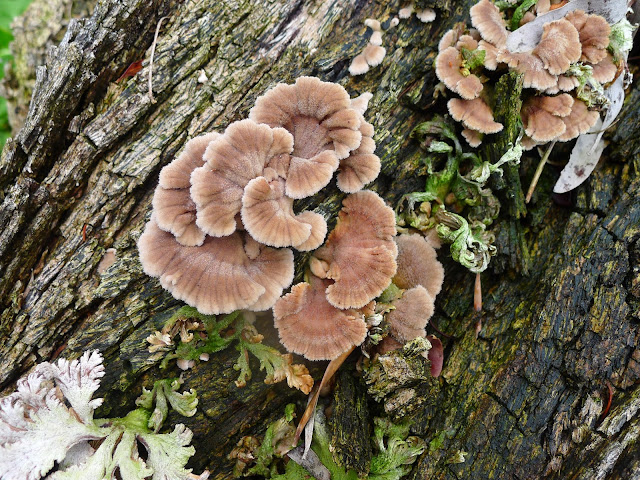In a gardening life there are moments one never forgets. Lupins, in my Swiss garden, tall and straight in jewel colours, I see them like it was yesterday.Titania
Rose of Sharon; Hibiscus mutabilis; after flowering I prune it severely.
On the farm my garden started with a fig tree. It was tiny, just a cutting, Every morning, I went out and looked down from the terrace where I planted this cutting. It grew and grew, one leaf after the other. It looked so beautiful. I was waiting for the first fruit to grow. It produced wonderful figs. But the first growth was the best the most rewarding to watch this tiny tree spread its branches higher and higher until it reached into the terrace. When I think of this fig tree, I never see the mature tree, just the first stage as I watched it grow. Titania

On the farm my garden started with a fig tree. It was tiny, just a cutting, Every morning, I went out and looked down from the terrace where I planted this cutting. It grew and grew, one leaf after the other. It looked so beautiful. I was waiting for the first fruit to grow. It produced wonderful figs. But the first growth was the best the most rewarding to watch this tiny tree spread its branches higher and higher until it reached into the terrace. When I think of this fig tree, I never see the mature tree, just the first stage as I watched it grow. Titania

I have always adored Zinnia, here I grow mainly the miniatures, usually they reseed all year round but the best time for them is spring and autumn into early winter
.Zinnia is a genus of 20 species of annual and perennial plants of the family Asteraceae. They are native to scrub and dry grassland in an area stretching from the Southwestern United States to South America, with a centre of diversity in Mexico Members of the genus are notable for their solitary long-stemmed flowers that come in a variety of bright colors.
The name honours genus German botanist Johann Gottfried Zinn (1727–59).
I have grown them for years, love how they reseed and mutate into different patterns and colours.
Solenostemon (coleus) is a genus of flowering plants in the family Lamiaceae, native to tropical Africa, Asia and Australia. Cultivated for their highly variegated leaves plants in this genus are still widely known as "coleus", a name which refers to a defunct genus. "Coleus" may therefore be treated as a common name.
Flowers of the giant tropical Salvia madrensis.
Salvia madrensis is a yellow-flowered Salvia native to the Sierra Madre Oriental mountain range in Mexico, growing at 4,000-5,000 elevation in warm, wet areas. The specific epithet "madrensis" refers to the high
mountains where it grows.
“My garden is my most beautiful masterpiece”
Claude Monet
Pecan Nuts are ripening; this year they are small because it was a very dry spring. Normally the nuts are much bigger, about three times this size.
Rollinia, Brazilian custard apple, is a delicious fruit to grow in the home garden.
Abraham Lincoln
The first mandarins are ripe. they have a very thin skin and are hard to peel, but make a sweet juice, every day.
Paperbarks, Melaleuca quinquenervia is flowering in April. Its white bottelbrush blossoms are delightful, swarrming with nectar seeking insects.
Melaleuca quinquenervia, commonly known as broad-leaved paperbark, the paper bark tea tree or niaouli, is a small- to medium-sized tree of the allspice family, Myrtaceae.
This cassia lights up the country side and the gardens. It is also known under the querky name of "Puddingpipe" tree, because its long, dark brown seed pods resemble Vanilla pods.
The soil is littered with the big, orange flowers of the African tulip tree.
Spathodea
Spathodea is a monotypic genus in the flowering plant family Bignoniaceae. The single species it contains, Spathodea campanulata, is commonly known here as the African Tulip tree.
The rain encourages the growth of staghorn ferns on trees and beautiful fungi in subtle colours and patterns.
Zygopetalum is one of the Orchids flowering in April.
♥
Believe it or not:
“Once upon a time there were four little Rabbits, and their names were--Flopsy, Mopsy, Cottontail, and Peter. ”
― Beatrix Potter
― Beatrix Potter






























